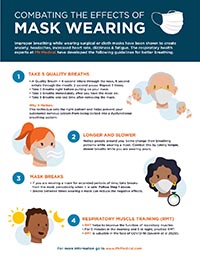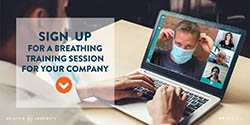NEW INVESTIGATION
WEAR YOUR MASK TO PROTECT OTHERS
TRAIN YOUR BREATHING TO PROTECT YOURSELF
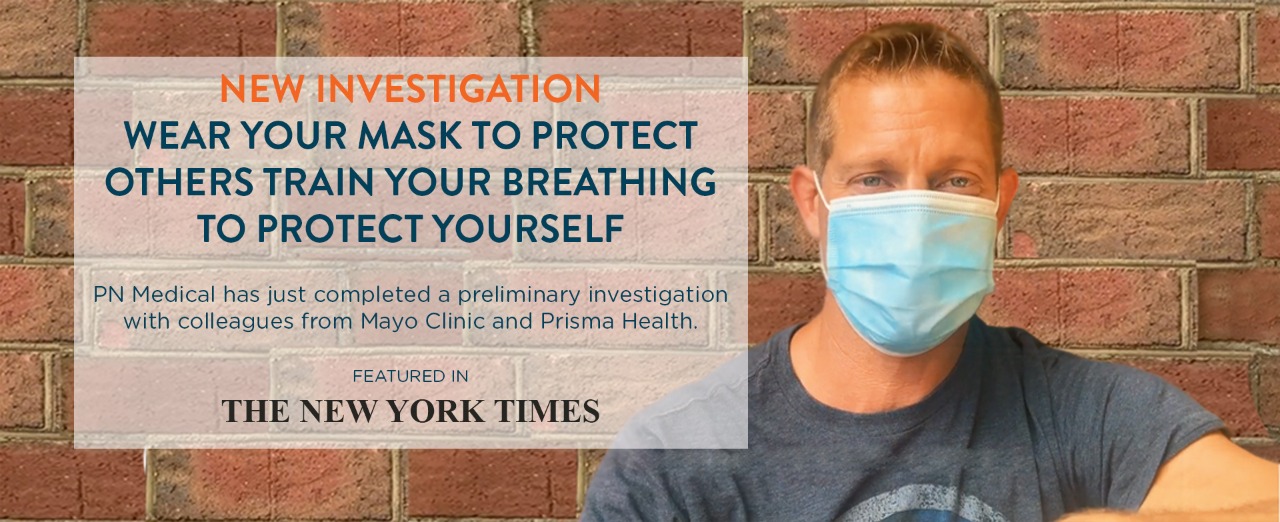
In order to slow the spread of Coronavirus, the CDC has recommended “wearing cloth face coverings in public settings where other social distancing measures are difficult to maintain.” Following CDC guidelines remains critical because many who contract the virus are asymptomatic, and face coverings assist in preventing them from transmitting it to others. As such, face masks (N95, surgical, cloth, homemade) have become commonplace in many areas nationwide. As states decide when the time is right to loosen social distancing restrictions, face coverings will be part of our lives for the foreseeable future. While observing this practice is vital, there are potential issues that may arise from continued use of a mask such as: anxiety, headaches, increased heart rate, confusion and fatigue. To mitigate these issues, PN Medical, which has been providing respiratory education and solutions for 40 years, is applying its unique expertise to share strategies that will help people breathe more effectively and feel better while wearing masks, and after removing them.
In early May 2020, PN Medical conducted research, interviewing workers in the retail, restaurant, grocery, and medical industries about their experience wearing masks. Their feedback prompted the company to initiate a preliminary investigation into mask use, looking at a small group of people from the general public. Early data was gathered with help of a few expert medical groups around the country, including Mayo Clinic, Prisma Health, and Shape Medical Systems. The testing, which involved subjects in Minnesota, South Carolina, and Florida, showed acute changes in breathing patterns after the mask was removed. Whether this is prevalent amongst the general public or unique to certain mask types or personality types is unknown and merits further study.
Wearing a face mask alters breathing patterns and thermoregulation, affecting both the body and the mind. Protective masks negatively impact thermoregulation by impairing heat exchange. This can result in higher facial temperatures and even elevated core temperatures, having significant psycho-physiological effects.(Roberge RJ, et al.2012)
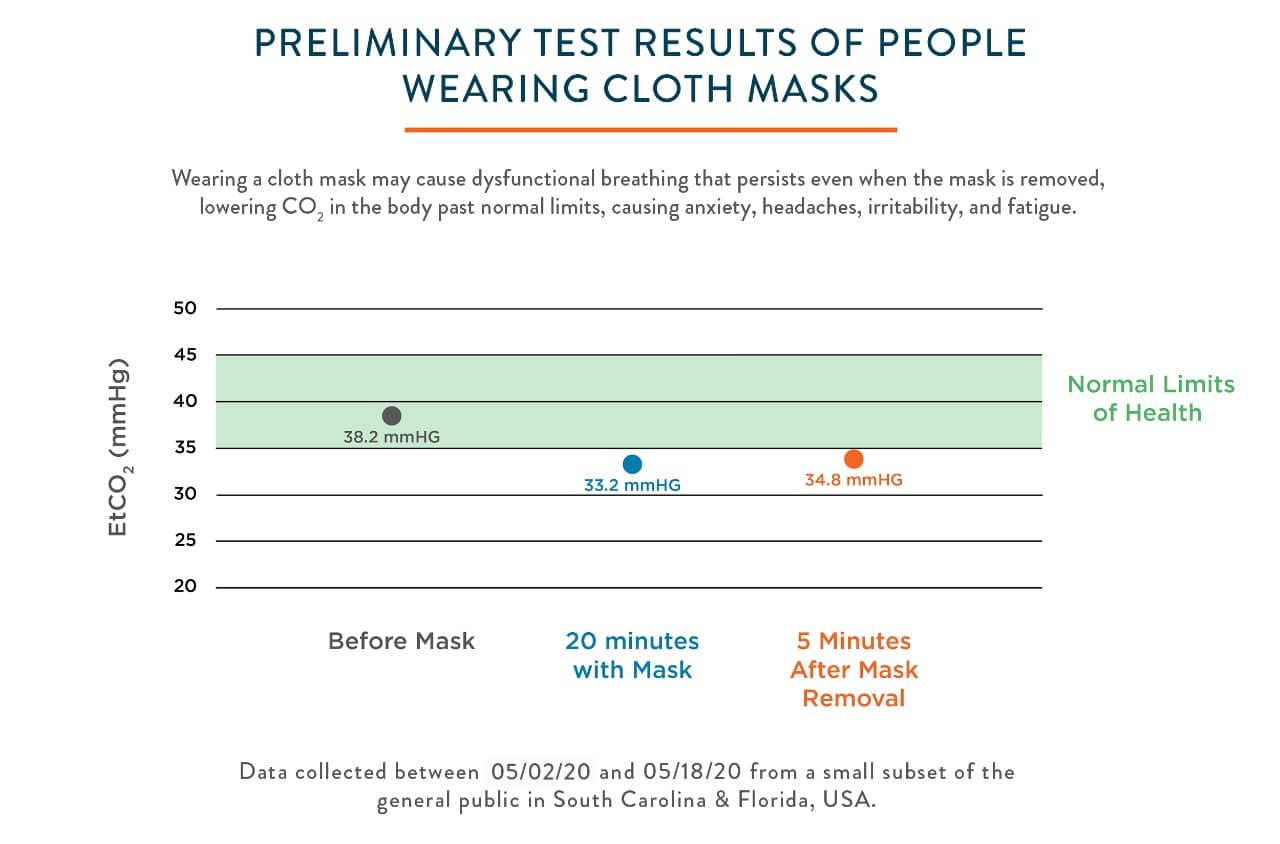
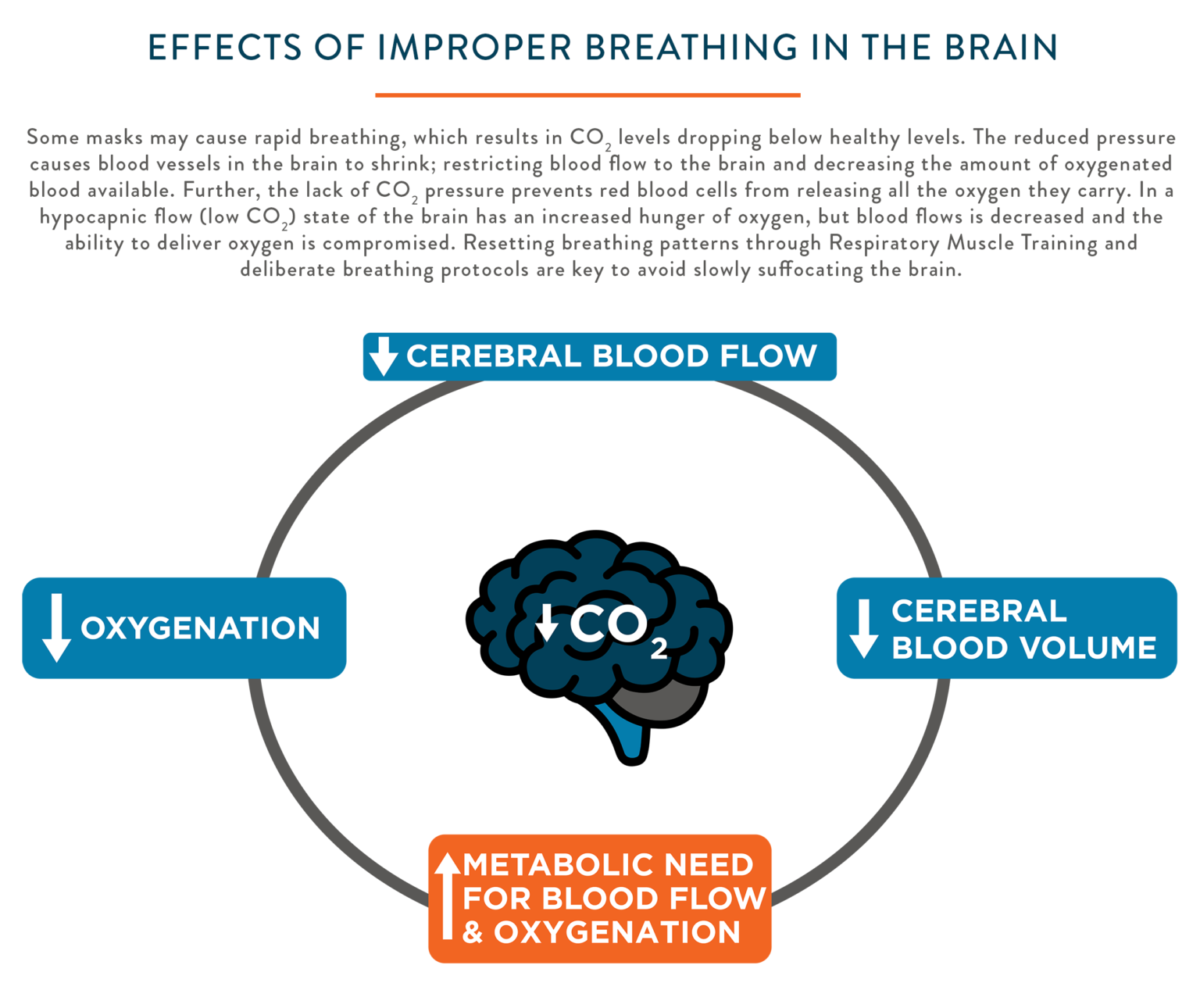
Because some cloth masks increase resistance, the wearer produces shorter inhales, and also exhales at a more rapid pace. This rapid form of breathing is known as hyperventilation, and has both immediate and long-term consequences.
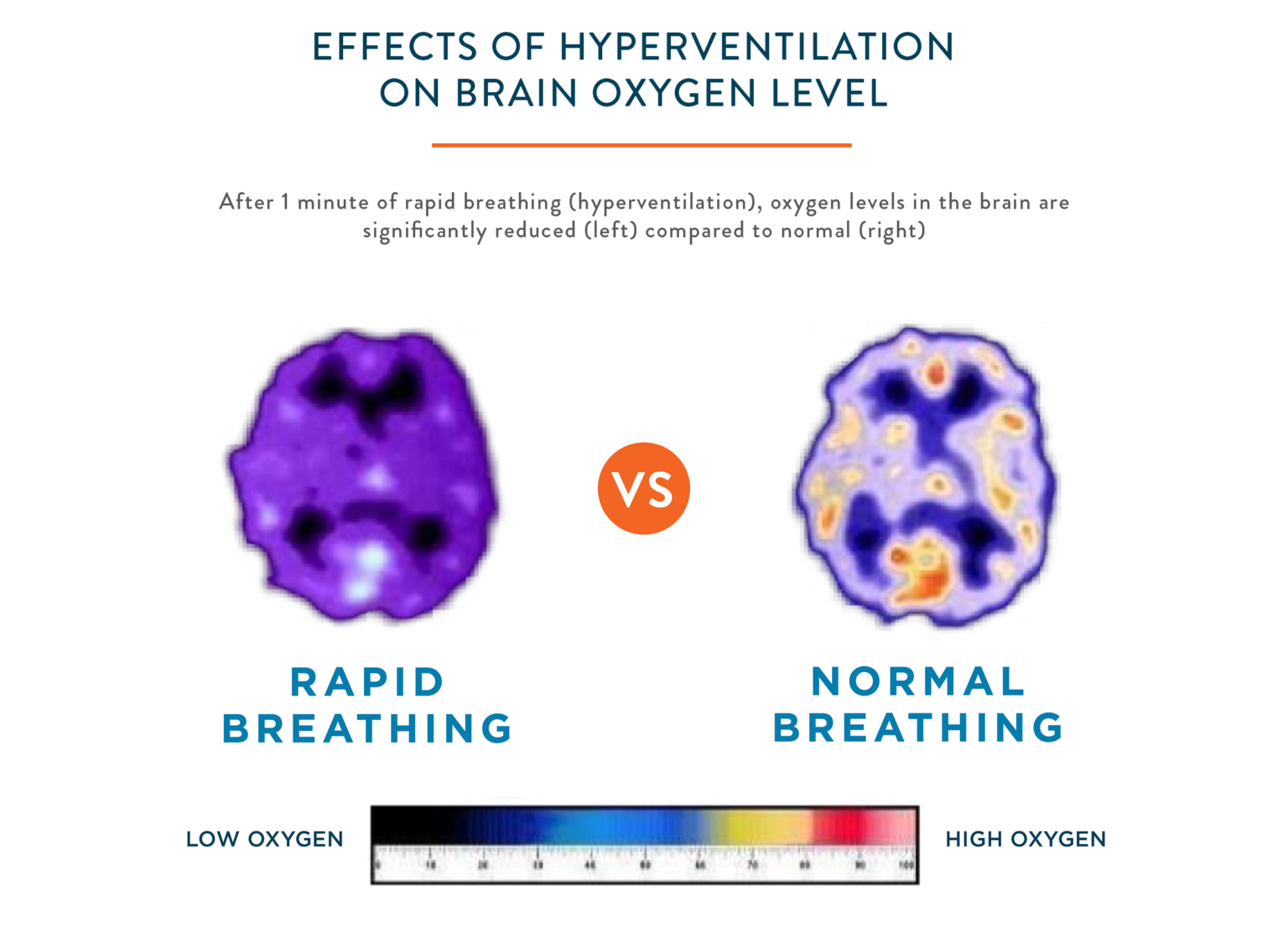
Respiration serves a vital role, delivering oxygen (O2) to organs and muscle while removing carbon dioxide (CO2). O2 is carried throughout the body by hemoglobin, and its affinity to the O2 increases or decreases depending on the environment of the body. As the level (or partial pressure) of CO2 increases, the pH of the body changes, and the hemoglobin more easily releases O2 to the tissue needing it. This is known as the Bohr effect. Breathing therefore modulates the pH of the body by impacting CO2 concentration. The right level of CO2 is needed in order for all parts of the body to receive O2.
Use of a mask, however, increases respiratory rates and removes CO2 faster than it is being produced. The drop in CO2 concentration is known as respiratory alkalosis, and it has a negative impact on the Bohr effect. That means excess exhalation of carbon dioxide results in hemoglobin holding on to some O2 molecules instead of releasing them to vital organs (brain, heart, liver, kidney). Even though the lungs may be fully saturated with O2, it is not being efficiently delivered to the body.
Further, the reduction of CO2 leads to a narrowing of blood vessels in the brain, creating an additional obstacle to O2 distribution. The ability to efficiently deliver O2 to tissue is directly linked to the blood supply, or perfusion. Wearing a mask increases breathing pace, which lowers CO2 concentration, which results in reduced perfusion. Furthermore, the shortened breathing cycle keeps ventilation high in the lungs using neck and chest muscles rather than the diaphragm. Since the diaphragm is innervated by the Vagus Nerve – responsible for calming down the body – lack of diaphragmatic breathing makes it harder to mentally relax.
Conversely, protective equipment such as the N95 and surgical mask may contribute to retained CO2 and restrict O2, intake, resulting in O2 delivery to the brain and body. Studies have shown that short-term use of face masks leads to reversible hypercapnia, characterized by elevated EtCO2 levels. Mild hypercapnia has been shown to affect cerebral blood flow (Maggio et al. 2014). Changes in cerebral microcirculation can have profound implications on metabolic demand of the brain and brain function. Prolonged hypercapnia can negatively affect cognitive function, memory and attention (Kung et al. 2018). This may be of particular concern in populations with extended mask use, such as medical personnel, retail workers, and children or school teachers
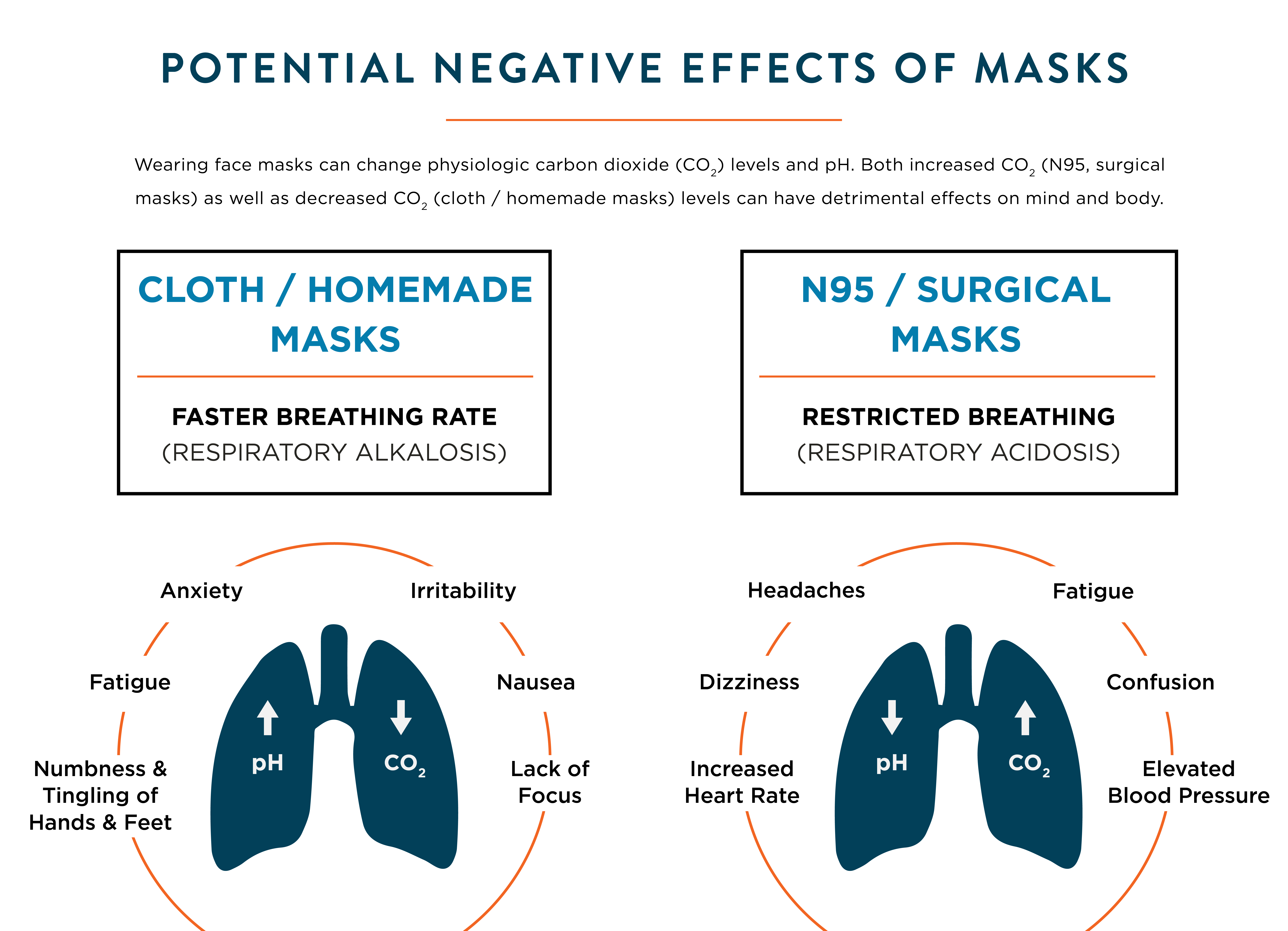
No matter what mask one wears, the effects of hyperventilation, restricted O2 intake, or excessive retention of CO2 can lead to symptoms such as:
- Anxiety
- Shortness of Breath
- Headaches
- Dizziness or Confusion
- Numbness or tingling in the hands and feet
- Problems Sleeping
RECOMMENDATIONS
1. Take 5 quality breaths prior to putting on a mask, immediately after donning a mask, and when you remove it.
- Quality breath = 4 second inhale through nose, 6 second exhale through mouth, 2 second pause
- Take 5 prior to putting on the mask
- Take 5 prior immediately after putting it on
- Take 5 when removing the mask
- This will set the proper breathing pattern and will help prevent the autonomic nervous system from being locked into a dysfunctional breathing pattern
2. Remember to take longer, slower breaths while wearing the mask.
3. If you must wear the mask for an extended period of time, take regular BREATHING BREAKS when it is safe, removing the mask while practicing quality breathing techniques breaks between times wearing a mask can reduce the negative effects
4. Conduct Respiratory Muscle Training (RMT) for 5 minutes in the AM and 5 minutes in the PM.RMT will allow individuals to take deeper, fuller breaths even when wearing a mask
- RMT will encourage and strengthen diaphragmatic breathing
- RMT is valuable in the face of coronavirus (Severin et al. 2020)
RECOMMENDED BREATHING STRATEGIES TO PRACTICE WHILE WEARING A MASK
WHAT’S NEXT?
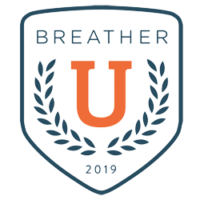
Breather University was designed BY clinicians, scientists, and human performance experts FOR clinicians, trainers, and coaches and the people they serve. Its promise is to provide people with new cardiopulmonary research, accredited certifications, education, insight and resources to move healthcare and human performance forward for all of us.
